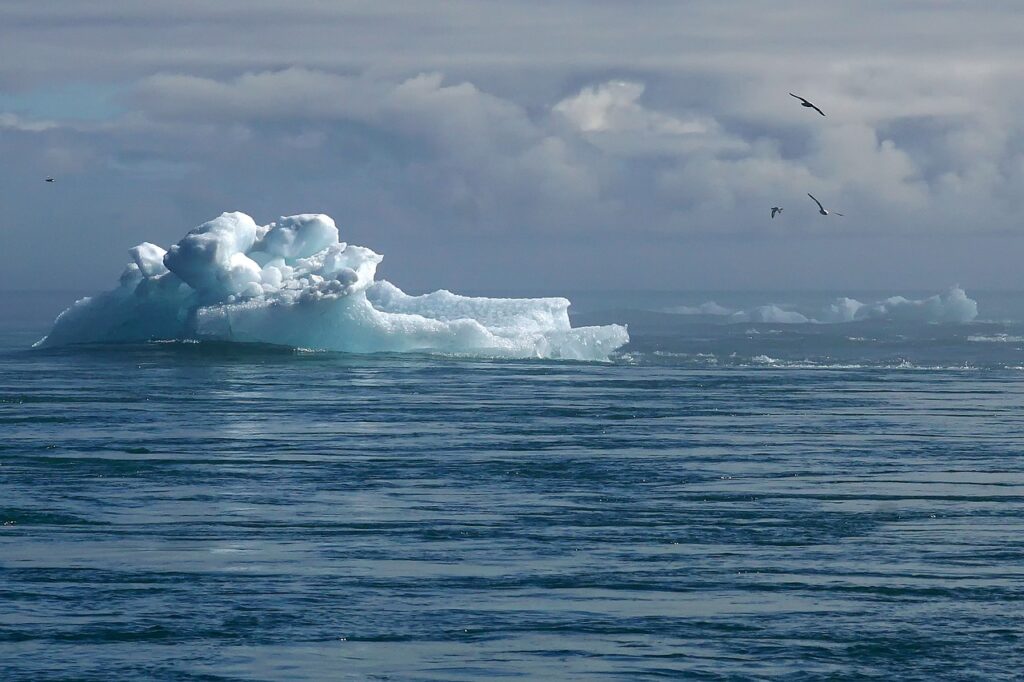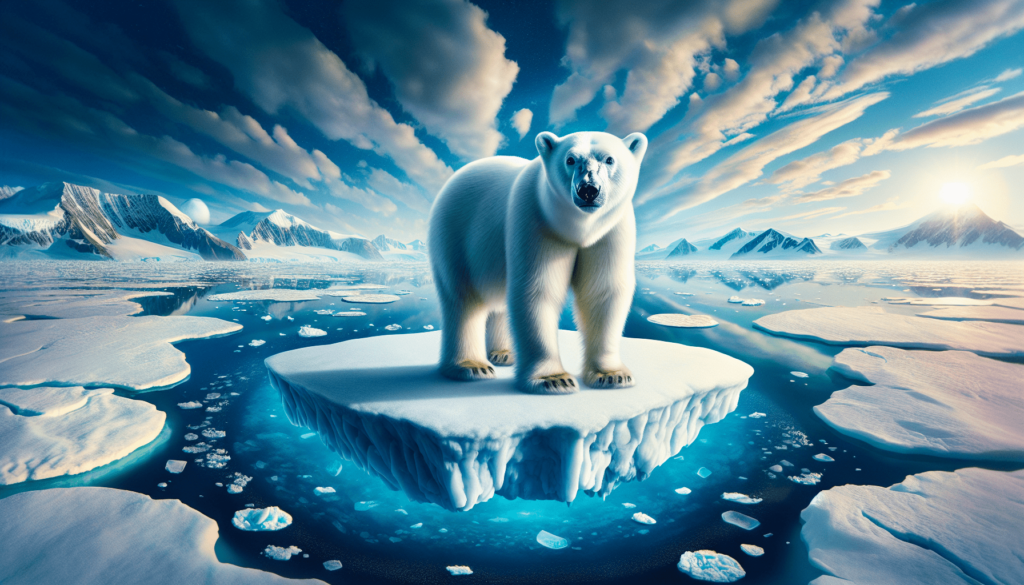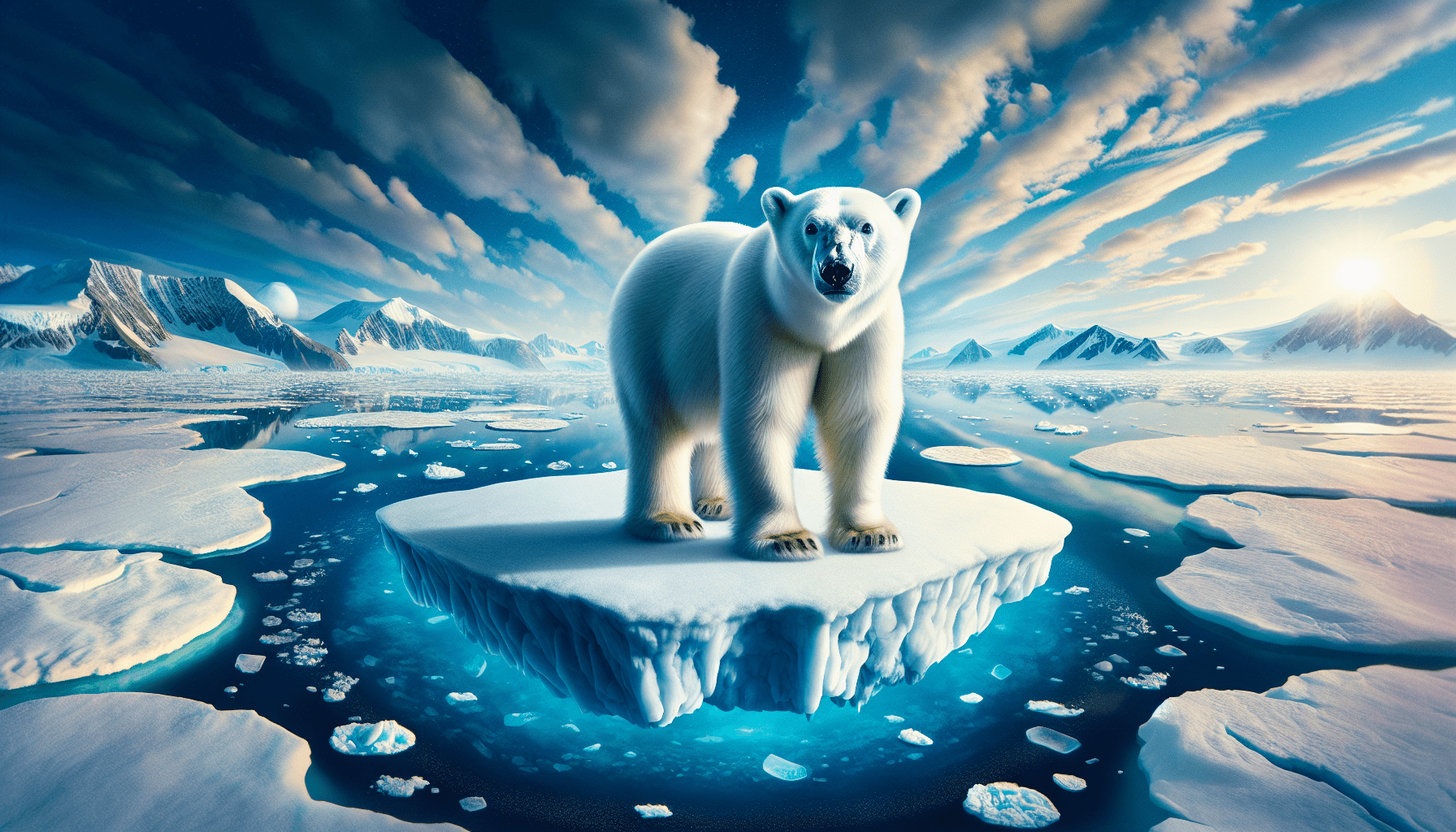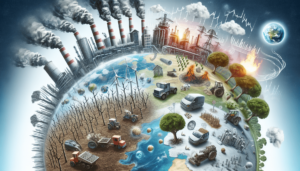Today, we are here to shed light on the intricate relationship between climate change and weather patterns. As the Earth’s climate continues to undergo significant shifts, it is imperative to grasp the profound impact these changes have on our day-to-day weather. By exploring the interconnected web of variables and examining the scientific evidence, we aim to unravel the ways in which climate change influences the intensity, frequency, and duration of weather events. So, let us embark on this enlightening journey, uncovering the hidden connections between climate change and the weather patterns that shape our lives.

Introduction
Welcome to our comprehensive article on the relationship between climate change and weather patterns! As concerned individuals and environmental enthusiasts, it is important for us to understand and discuss how climate change impacts the weather conditions we experience. Climate change refers to long-term alterations in temperature, precipitation, wind patterns, and other aspects of the Earth’s climate system. On the other hand, weather patterns are the day-to-day variations in temperature, rainfall, humidity, and other atmospheric conditions that we experience. In this article, we will explore the connections between climate change and weather patterns, focusing on various aspects such as extreme weather events, temperature patterns, precipitation patterns, melting polar ice, atmospheric circulation patterns, feedback loops, and their impacts on human societies. Additionally, we will discuss mitigation and adaptation strategies that can help us address and mitigate the effects of climate change.
The Relationship Between Climate Change and Weather Patterns
Understanding climate change
To comprehend the relationship between climate change and weather patterns, it is crucial to understand what climate change entails. Scientists widely agree that climate change is primarily caused by human activities, particularly the burning of fossil fuels, deforestation, and various industrial processes that release greenhouse gases (GHGs) into the atmosphere. These GHGs, including carbon dioxide (CO2), methane (CH4), and nitrous oxide (N2O), trap heat in the Earth’s atmosphere and contribute to the greenhouse effect, causing the planet to warm up over time.
Defining weather patterns
While climate describes the long-term average of weather conditions in a particular region, weather patterns refer to the short-term atmospheric conditions that occur on a daily or weekly basis. These patterns include temperature, rainfall, humidity, wind speed, and other variables. Weather patterns can vary greatly from one region to another and are influenced by a combination of factors, including atmospheric pressure, air masses, ocean currents, and local topography.
Examining the link between climate change and weather patterns
There is substantial evidence to suggest that climate change is influencing and altering weather patterns worldwide. While individual weather events cannot be directly attributed to climate change, the overall impact of climate change is evident in the increased frequency and intensity of extreme weather events. Understanding these specific changes and their implications is crucial for developing strategies to mitigate and adapt to a changing climate.

Increasing Frequency and Intensity of Extreme Weather Events
Impact of climate change on hurricanes and tropical storms
One prominent example of the link between climate change and extreme weather is the impact on hurricanes and tropical storms. Warmer ocean temperatures provide more energy for these storms to develop and intensify, increasing the likelihood of more frequent and stronger hurricanes. The increased intensity of these storms poses a higher risk of storm surge, flooding, and destruction in coastal areas.
Changing patterns of droughts and heatwaves
Climate change also amplifies the occurrence and severity of droughts and heatwaves. Rising temperatures accelerate evaporation, leading to intensified drought conditions. Heatwaves, which are already becoming more frequent, are projected to increase in duration and intensity. These events have severe impacts on agriculture, water resources, and human health, with vulnerable populations being disproportionately affected.
Rising frequency of heavy rainfall and floods
While some regions experience more arid conditions, others face an increase in heavy rainfall events and subsequent floods. Warmer air can hold more moisture, leading to increased precipitation during extreme rainfall events. This heightened rainfall can overwhelm infrastructures, cause flash floods, and devastate communities. The increased frequency of such events makes it crucial to adapt infrastructure and drainage systems to withstand their impact.
Increased severity of wildfires
Climate change has been linked to more severe and prolonged wildfire seasons. Rising temperatures, coupled with changing precipitation patterns, create drier conditions, increasing the risk of wildfires. The combination of prolonged droughts, intense heatwaves, and the accumulation of dry vegetation creates an environment conducive to widespread and destructive wildfires. These fires not only threaten human settlements but also impact ecosystems and contribute to further climate change through the release of carbon dioxide.
Altered Temperature Patterns
Shifts in global average temperature
One of the key impacts of climate change is the alteration of global temperature patterns. Over the past century, the Earth’s average temperature has risen, primarily due to human activities. The increase in greenhouse gas concentrations in the atmosphere traps more heat, causing a rise in global average temperatures. This rise is particularly evident in the Arctic, where temperatures are increasing at a much higher rate than the global average, leading to the rapid melting of polar ice.
Changes in seasonal temperatures
Beyond the global average, climate change also affects seasonal temperature patterns. Winters are generally becoming milder, with shorter durations of freezing temperatures. Conversely, summers are becoming hotter, with more frequent and prolonged heatwaves. These changes have implications for agriculture, human health, and the overall balance of ecosystems, as species adapt differently to shifting temperature patterns.
Impact on temperature-dependent phenomena (e.g., snowmelt, growing seasons)
Temperature patterns influence various natural phenomena, including snowmelt and growing seasons. Rising temperatures lead to earlier snowmelt, which affects water availability for ecosystems, agriculture, and various human activities. Additionally, changes in temperature and precipitation patterns impact growing seasons, altering the timing and viability of crop harvests. These shifts can disrupt agricultural systems and have long-lasting socioeconomic consequences.

Shifts in Precipitation Patterns
Changing rainfall distribution and intensity
Climate change is causing shifts in precipitation patterns worldwide. Some regions experience increased rainfall, while others face decreased rainfall. These changes can occur not only in total annual rainfall amounts but also in the distribution and intensity of rainfall. This variability affects water availability, agricultural practices, and the overall functioning of ecosystems, as different species depend on specific rainfall patterns.
Consequences for water availability and agriculture
Altered precipitation patterns directly impact water availability and agricultural productivity. Increased rainfall in some regions can lead to waterlogging, soil erosion, and contamination of water sources. Conversely, decreased rainfall and prolonged droughts have severe consequences for irrigation, livestock, and crop production. Ensuring water security and adapting agricultural practices become fundamental in the face of changing precipitation patterns.
Effects on ecosystems and biodiversity
Precipitation patterns are crucial for the functioning of ecosystems and the distribution of species. Changes in rainfall intensity and timing can disrupt the balance within ecosystems, impacting flora, fauna, and their habitats. Species that rely on specific rainfall patterns for breeding, migration, or feeding may face difficulties adapting to rapid changes in precipitation. These alterations in ecosystems can have profound consequences for biodiversity and the overall resilience of natural systems.
Melting Polar Ice and Rising Sea Levels
Impact of melting ice on weather patterns
Melting polar ice, particularly in the Arctic, contributes to changes in weather patterns globally. The loss of ice reduces the Earth’s albedo, the measure of how much sunlight is reflected off the planet’s surface. As a result, more sunlight is absorbed, leading to increased warming. The loss of polar ice also disrupts atmospheric circulation patterns, potentially influencing the jet stream, which can affect weather systems over large regions.
Rising sea levels and coastal hazards
The melting of land-based ice, along with the expansion of seawater due to warming, contributes to rising sea levels. Higher sea levels increase the risk of coastal hazards such as flooding, storm surges, and erosion. Communities and habitats in coastal regions are becoming increasingly vulnerable to these hazards, necessitating adaptation strategies to protect both human populations and fragile coastal ecosystems.
Influence on ocean currents and marine ecosystems
Melting polar ice can impact ocean currents, including the vital Atlantic meridional overturning circulation. Changes in ocean currents can influence heat distribution, nutrient transport, and the migration patterns of marine species. Altered ocean currents have far-reaching effects on marine ecosystems, fisheries, and the overall health of the oceans. The consequences of these changes extend beyond coastal areas, impacting climate systems on a global scale.

Changes in Atmospheric Circulation Patterns
Shifting patterns of wind and pressure systems
Climate change has the potential to alter atmospheric circulation patterns, including global wind and pressure systems. The changing climate influences the distribution of heat in the atmosphere, which can impact the strength and movement of these systems. Changes in wind patterns affect regional climates, weather systems, and the distribution of precipitation. Understanding these shifts is crucial for predicting and adapting to future weather conditions.
Impact on global weather systems (e.g., El Niño, monsoons)
Climate change can also influence well-known weather phenomena such as El Niño and monsoons. El Niño, a periodic warming of the tropical Pacific Ocean, can be affected by climate change, potentially intensifying its impacts on global weather patterns. Monsoons, which play a significant role in regional climates, may experience altered timing and intensity due to changing ocean temperatures. These shifts have implications for agriculture, water resources, and the livelihoods of millions of people.
Influence on regional climates
Climate change not only affects global weather systems but also brings about changes in regional climates. Changing wind patterns, altered precipitation regimes, and shifts in temperature patterns all impact the microclimates within specific regions. These changes have far-reaching consequences for agriculture, water availability, and the suitability of landscapes for human habitation. Understanding these regional impacts is crucial for effective adaptation and mitigation strategies.
Feedback Loops and Amplifying Effects
Positive feedback mechanisms in climate change
Climate change can trigger feedback mechanisms that amplify its effects. For example, as the Earth warms, permafrost regions release frozen organic matter, such as methane, which adds to the greenhouse gases in the atmosphere, further contributing to warming. Melting ice also reduces the Earth’s albedo, leading to increased absorption of sunlight and more heating. These feedback loops can accelerate climate change, making it crucial to reduce greenhouse gas emissions and mitigate the factors that contribute to these positive feedback mechanisms.
Amplifying effects of altered weather patterns
The altered weather patterns resulting from climate change can also amplify its effects. Extreme weather events such as hurricanes and heatwaves can intensify the impacts of climate change by causing damage to infrastructure, disrupting supply chains, and leading to economic losses. Moreover, changes in precipitation patterns can exacerbate flooding or drought conditions, further impacting ecosystems, agriculture, and human societies. These amplifying effects highlight the importance of adapting to changing weather patterns and mitigating climate change through sustainable practices.
Implications for future climate scenarios
Understanding the feedback loops and amplifying effects of climate change and altered weather patterns is crucial for evaluating future climate scenarios. By considering the potential consequences of these effects, scientists and policymakers can develop more accurate predictions and models to inform climate management strategies. Additionally, recognizing these implications can help prioritize mitigation efforts and guide adaptation planning for a more sustainable and resilient future.
Impacts on Human Societies
Threats to food security and agricultural productivity
Climate change and its impact on weather patterns threaten global food security and agricultural productivity. Changes in temperature, precipitation, and extreme weather events can disrupt growing seasons, reduce crop yields, and destroy livestock. Vulnerable populations, particularly in developing countries, may face increased food scarcity and heightened reliance on imports, jeopardizing their food security. Adapting agricultural practices, improving resilience, and promoting sustainable farming methods are essential for ensuring food availability in a changing climate.
Increased vulnerability to natural disasters
The increasing frequency and intensity of extreme weather events pose significant risks to human societies. Populated areas in coastal regions, prone to storm surges and flooding, face heightened vulnerability. Inland regions are not exempt, as changing precipitation patterns can lead to flash floods, landslides, and other natural disasters. These events result in loss of life, displacement, and economic losses, amplifying existing social inequalities. Building resilient infrastructure, implementing effective early warning systems, and community preparedness are crucial for minimizing the impacts of natural disasters.
Health risks and disease patterns
Climate change and altered weather patterns also have implications for human health. Heatwaves and prolonged periods of high temperatures contribute to heat-related illnesses and increased mortality, particularly among vulnerable populations. Additionally, changing precipitation patterns can provide favorable conditions for the spread of waterborne diseases, such as cholera, and vector-borne diseases, such as malaria and dengue fever. Public health systems need to adapt to these changing patterns and implement effective measures to prevent and respond to climate-related health risks.
Social and economic consequences
The societal and economic consequences of climate change and its impacts on weather patterns are far-reaching. Disruptions to agriculture, water resources, and infrastructure can lead to significant economic losses and impact livelihoods. Migration and displacement due to climate-related events further strain social and economic systems. Vulnerable communities, particularly those in poverty, bear the brunt of these consequences, exacerbating existing inequalities. Recognizing and addressing the social and economic impacts of climate change is essential for building resilient communities and ensuring a just transition to a sustainable future.
Mitigation and Adaptation Strategies
Reducing greenhouse gas emissions
Mitigating climate change requires strategic actions to reduce greenhouse gas emissions. Governments, industries, and individuals must prioritize energy efficiency, transition to renewable energy sources, and improve industrial practices to reduce emissions. Additionally, curbing deforestation and promoting sustainable land use practices can help mitigate climate change by absorbing more carbon dioxide from the atmosphere.
Promoting renewable energy sources
Transitioning to renewable energy sources plays a crucial role in mitigating climate change. Utilizing solar, wind, hydropower, and geothermal energy reduces reliance on fossil fuels and decreases greenhouse gas emissions. Policymakers need to incentivize the development and implementation of renewable energy technologies, fostering a sustainable and low-carbon energy sector.
Developing climate-resilient infrastructure
Adapting to climate change requires investing in climate-resilient infrastructure. Buildings, transportation systems, and urban planning should incorporate designs that minimize vulnerability to extreme weather events. Implementing nature-based solutions, such as green roofs and permeable surfaces, can reduce the impacts of heatwaves and urban flooding. Smart water management and efficient irrigation systems also contribute to climate resilience.
Enhancing disaster preparedness and response
Improving disaster preparedness and response mechanisms is vital for reducing the impacts of extreme weather events. This includes early warning systems, emergency evacuation plans, and disaster containment strategies. Strengthening community resilience through public education programs and community engagement initiatives fosters preparedness and enhances response capabilities.
Advancing climate change education and awareness
Promoting climate change education and raising awareness are essential for fostering sustainable practices and driving meaningful change. Education empowers individuals to understand the science behind climate change, its impacts on weather patterns, and the need for adaptation and mitigation strategies. By cultivating a climate-conscious society, we can inspire collective action, drive policy changes, and contribute to a more sustainable future.
In conclusion, climate change profoundly influences weather patterns, leading to a wide range of impacts on our planet and human societies. From increasing frequency and intensity of extreme weather events to altered temperature and precipitation patterns, these changes have far-reaching consequences. Melting polar ice, shifts in atmospheric circulation patterns, and feedback loops further amplify the effects of climate change. Understanding these relationships helps us develop strategies to mitigate and adapt to the impacts of climate change. By reducing greenhouse gas emissions, promoting renewable energy, developing climate-resilient infrastructure, enhancing disaster preparedness, and advancing climate change education, we can work together to build a sustainable and resilient future for ourselves and future generations.




